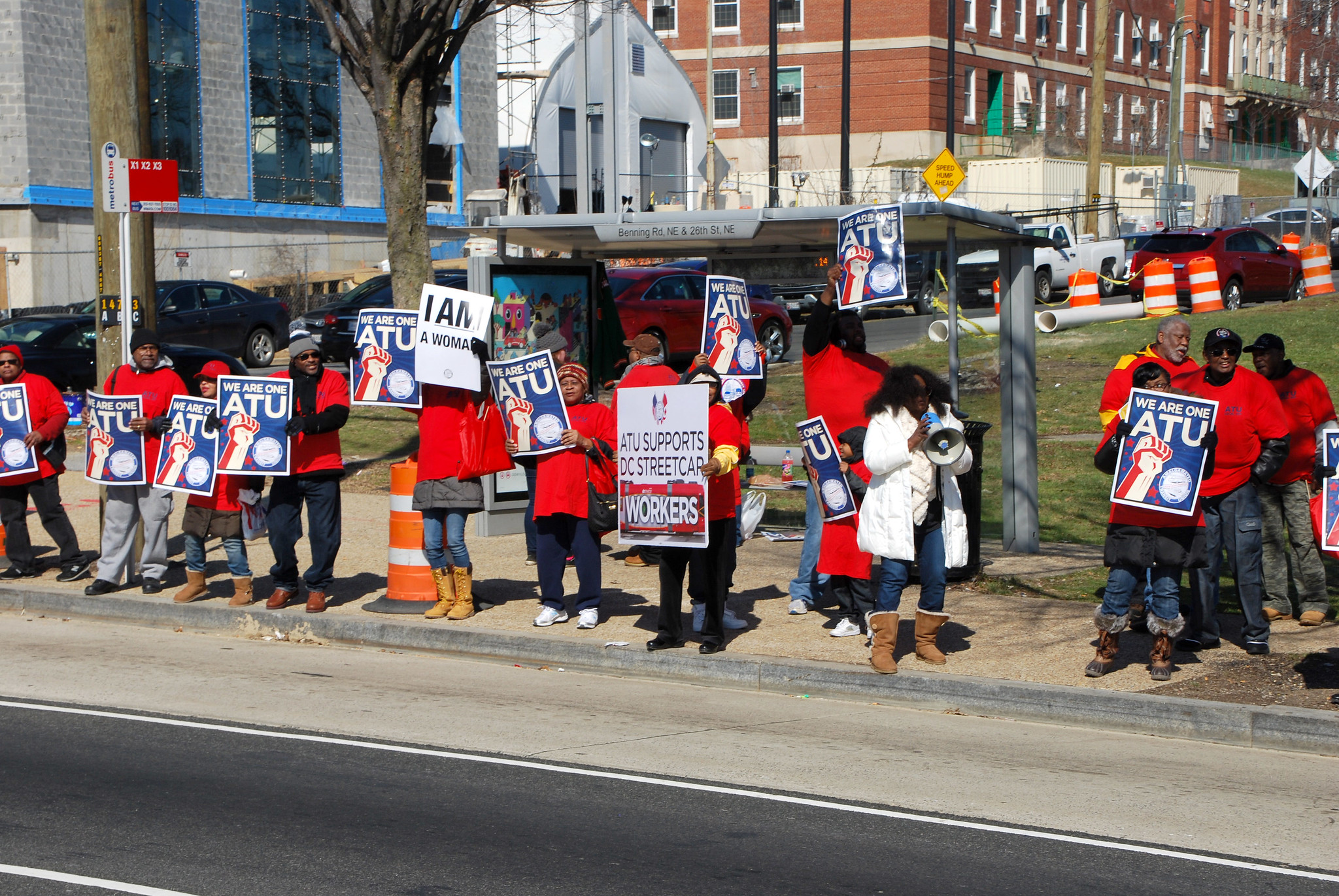It’s wonderful to read an article from a DSA member that lays out and agrees with so many aspects of the rank-and-file strategy (RFS), since it’s a term that may not be clear to all. It was learning of that strategy for building a socialist movement that caused me to join the International Socialists back in 1974.
Andrew D. is right that the rank-and-file strategy was not a strategy for taking over unions or a tactic for how socialists should function within them. As he shows with his many quotes from Kim Moody’s pamphlet from 2000, it was a strategy for fomenting class struggle, a struggle in which workers would become more open to socialist ideas. “The Left with its highly theorized, often moralistic politics, and the worker activists with an un-theorized pragmatic outlook are often like trains passing in the night,” Moody wrote.
What was lacking in the U.S. was a “sea of class-conscious workers for socialist ideas and organizations to swim in.” Socialists’ job was to help create that sea. And one way to foment class struggle, Moody argued, was to take union jobs and to work alongside workers who were already fighting their bosses — and fighting, when necessary, their union officials.
So I’m glad that the rank-and-file strategy is getting another look in 2019. I’m not sure why Andrew D. thinks very few people have actually read it all the way, through. But laying that aside, there are a few factual errors in the piece that deserve correcting.
Quickly:
- The rank-and-file strategy was formulated by Moody and others in the International Socialists (the IS merged with other groups in 1986 to form Solidarity) in the early 1970s. It was not named or theorized in 2000 as a look back at previous work. Other left groups in the 1970s had their own versions that also involved encouraging members to get union jobs.
- Getting union staff jobs was never part of the RFS, certainly not for the IS and to my knowledge not for other socialist groups. If not a policy, it was, however, certainly common practice in groups to their right, including the Communist Party and the old DSA.
- At the time, it was actually quite easy for college graduates to get blue-collar jobs; we weren’t weeded out by employers as Andrew asserts.
- The Communications Workers were not the only major union to endorse Bernie Sanders in 2016. The Postal Workers, Amalgamated Transit Union, and National Nurses United were some of the others.
- In the 2018 West Virginia educators strike, it would be accurate to say, as Andrew does, that “local union leadership [was] ready to fight” only because the massive groundswell of rank-and-file pressure came first, pushed them to act, and kept them from backing down at more than one juncture.
- Andrew implies that poor old Teamsters for a Democratic Union (43 years old, not 50) is a failure. In fact, the TDU-backed slate came within 6,000 votes of winning the 2016 election for international president, in a union of 1.4 million members. (The reformers actually won in the U.S. but lost because of Canadian votes.) And last year, TDU convinced a majority of UPS voters to say no to a concessionary contract, the largest private sector contract in the U.S.
Two Caveats
Andrew writes that the RFS “has been vindicated,” but he has two caveats. First, he says, only some of today’s strike wave is coming about because opposition caucuses led by leftists took office and stepped up to fight the boss; some of the recent actions, he points out, have other origins.
True! The authors of the RFS — and its adherents today — would never say that nothing can happen in the working class without leftist intervention. It was precisely because workers were already rebelling in the 1970s that we had some intimation that the RFS could work. Of the literally thousands of wildcat strikes that happened in the coal mines in the 1970s, virtually none were led by socialists.
So let’s, along with Andrew, support strikes and organizing drives wherever they come from, including from top-down unions, or those with a mixed record, or whatever. Despite our jubilation about the return of the strike in 2018–2019, such instances are still rare enough.
Second, Andrew argues for taking union staff jobs as part of an overall strategy toward labor.
I’d be the last to argue inside DSA, where only a small minority of members have any relationship to the labor movement at all, that getting a union staff job is a bad idea. So many dedicated union staffers are good organizers, creative labor educators, smart tacticians, and strategists. (We’re not talking here about the piecard type who’s on staff to get away from having to stand for election by the members and who sees his job as a reward for loyal service to those above him; there’s a lot of those too.)
But the fact remains that staffers are beholden to those who hired them, and if those officials are undemocratic, lazy, or in bed with the boss, there’s nothing the staff can do about it. If they’re told to campaign for Biden against Bernie, or to urge members to ratify a lousy contract, or if they’re expected to contribute to incumbent officers’ re-election campaigns, they do it or they lose their jobs.
To bring out the old John L. Lewis story: Lewis was asked if he was worried about hiring so many communists as CIO staffers. Lewis replied, “Who gets the bird — the hunter or the dog?” Lewis knew that no matter what great work his dogs did, he the hunter would control what happened to the result.
So that’s a reason for socialists to get a union job instead of a job on union staff. As happy as we are with the recent uptick in class struggle, the vast majority of U.S. unions need a thorough transformation if they are to fight the boss with a chance of winning. They need democracy, they need a much larger core of active members, they need boldness and willingness to break laws. That’s what we saw in the teacher strike wave in West Virginia, Arizona, and Oklahoma, and it all came from teachers and school staff themselves.
That kind of bottom-up action can’t come from union staff, no matter how great the staffers’ politics.
So I ask fellow DSA members, wouldn’t you like to be part of something like that? When something like the Stop and Shop strike kicks off, aren’t we better off inside the union than only offering strike support from the outside?
Many DSA members see their political work as something for nights and weekends and their job as a necessary evil. What if going to work every day was also a chance to organize with your fellow workers, to strategize, to march on the boss, to prepare a plan for the union meeting, to run for union office and win — even to co-lead a strike yourself someday?
New York City DSA has been working for the past year to help interested members get union jobs in strategic industries critical to the city’s economy. It takes time, but with persistence chapter members will be in a position to help build strong strikes and other actions that raise class consciousness. They will be able to do that because they have been side-by-side with their coworkers building trust over time. Other chapters have expressed interest in developing similar programs, and it’s part of the mission of DSA’s Democratic Socialist Labor Commission to expand this work.
Building the kind of union that people will want to join is our best hope for organizing the unorganized majority, too. And that’s a whole other opportunity for class struggle.
These job choices aren’t just about what will make us feel good, of course. Many Bread & Roses caucus members are taking union jobs in the working class, and organizing DSA members as a whole to do the same, for the same reasons that the IS did in 1972: because that’s the best place to foment class struggle and class consciousness, and from there socialist consciousness.




